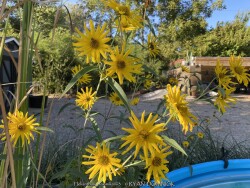
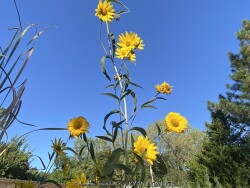




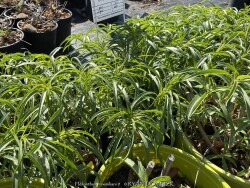
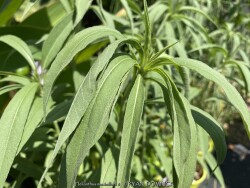
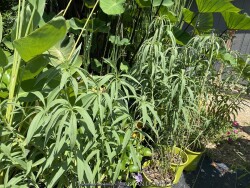
Plant Min Zone: 4a
Plant Max Zone: 9a
Sunlight: Full Sun
Water / Rainfall: Low, Average
Soil Quality: Poor, Average
Bloom Season: Late Summer, Fall
Flower Color: Yellow, Gold
Berry / Fruit Color: Brown-Beige
Spring Foliage Color: Green
Summer Foliage Color: Green
Fall Foliage Color: Green
Evergreen Foliage: No
Winter Interest: No
Scented Flowers: No
Drought Tolerance: Medium, High
Wet-Feet Tolerance: Medium, High
Humidity Tolerance: Medium, High
Wind Tolerance: Medium, High
Poor Soil Tolerance: Rocky Soils, Sandy Soils
Height: 4' - 8'
Width: 3' - 5'
Growth Rate: Medium, Fast
Service Life: Long: 5-10 years
Maintenance Need: High
Spreading Potential: Medium
Yearly Trimming Tips: Trim Perennial to Ground Around First Fall Freeze: No Winter Interest.
Plant Grouping Size: Small Grouping of 3-5
Best Side of House: South Exposure, West Exposure, East Exposure
Extreme Planting Locations: Resistant to Rabbits
Ornamental Features: Long Blooming Season
Special Landscape Uses: Naturalizing
Possible Pest Problems: None
Plant Limitations: Aggressive Rhizomes / Runners, May Needs Staking, Needs Frequent Pruning / Trimming
Shippable in 2026: YES
Maximilian's Sunflower is a very tall and showy wildflower native to the Great Plains in central North America and Canada. It has a distinctive fold down the mid-rib center of the narrow leaf. The leaf may be up to 12" long, slightly curved, and arranged in a whorl around the unbranching stems. In rich soils with average moisture, it reaches up to 10 feet tall and towers above surrounding vegetation when in bloom. In Eastern Kansas, typically our 40 inches of rainfall is sufficient without extra water. It is best suited for full sun and dry to medium soils to control height and to avoid floppiness. Like most other Sunflower species, Maximilian's Sunflower attracts a several different species of bees and butterflies. This species spreads by rhizomes and may spread too vigorously for most gardens, and therefore needs plenty of room. It is best used for naturalizing, roadway ditch plantings, buffer zones, or as as large isolated clumps. Cut or mow all foliage down in the winter, mowing around it during the growing season generally stops the yearly spread.